Barcelona: Urban Habitat
Hot in summer, cool in winter – stylish, alternative, fresh and avant-garde year-round – Barcelona is reaffirming its architectural legacy and contemporary place at the forefront of modern urban habitats. Here are some glimpses into what the capital of Catalonia is doing in the fields of public transport with “Bicing” routes and hybrid buses, plus lighter and more efficient buildings, as well as peripheral projects, like wind farms in Tarragona and parking lots overlooking the countryside. And Acciona has built the first zero emissions racing sailboat – the ‘first’ in a long time since boats used to rely only on wind and water energy to sail…
Public transport
Barcelona’s public urban transport system includes a community bicycle program called “Bicing”, hybrid buses, electric vehicles, and a small fleet of 120 electric scooters.
The Bicing company has a network of lend-and-return stations around the city; most stations are next to public transport stops or public parking to facilitate and promote intermodality.
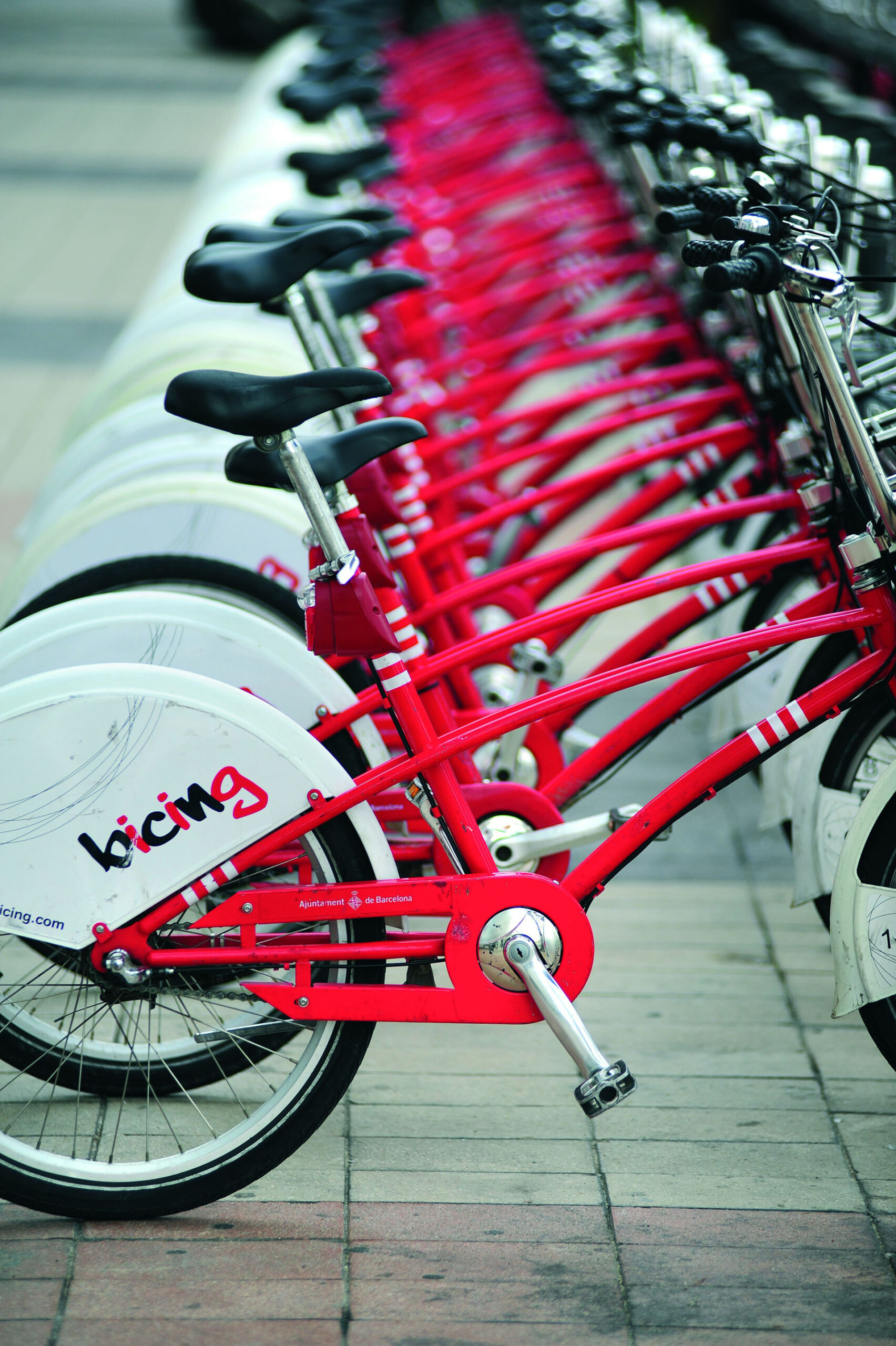
A Bicing pass costs 27 Euros a year. Not bad at all compared to the MobecPoint and Going Green electric scooters that cost 29 Euros for half a day.
The classic red-framed bicycles with white fenders are very popular, particularly for going downhill. Bicing then has to collect the bikes in trucks and bring them back up the hills. This extra costs means the municipality is losing about half its investment and may increase fares next year.
Transports Metropolitans de Barcelona (TMB) is coming out with 80 hybrid vehicles (diesel-electric). 33 percent of the bus fleet is powered by natural gas and over 500 vehicles are having filters for particulate matter and NOx installed. These measures reduce exhaust and noise pollution, and means that by the end of 2012 TMB will have one of the cleanest public transport fleets in Europe.
LIVE Barcelona – Logistics for the Implementation of the Electric Vehicle (LIVE) – is an open public-private platform that promotes the use of electric vehicles in the city. The project aims to make Barcelona a reference for electric mobility innovation around the world. The Government of Catalonia, Barcelona City Council, the Spanish Government, SEAT, ENDESA and Siemens all endorse the LIVE Barcelona project. There are already over 250 charging stations around the city; the goal is for every citizen to have a charging dock within 5 minutes of home.
The first Fast Charge Station for electric vehicles installed in Spain is on Carrer Lope de Vega, 125, and is operated by Endesa Cepsa. With the commercialization of electric vehicles in 2012, such charging points will be increasingly common. Winner of the 100% electric car of the year in 2011, the Nissan LEAF, can be charged at such a station with an empty battery to 80% potential in less than half-an-hour and can travel 175 kilometers with that energy. Maybe not as quick a fix as gallons of gasoline, but this will reduce carbon emissions and noise pollution in cities.
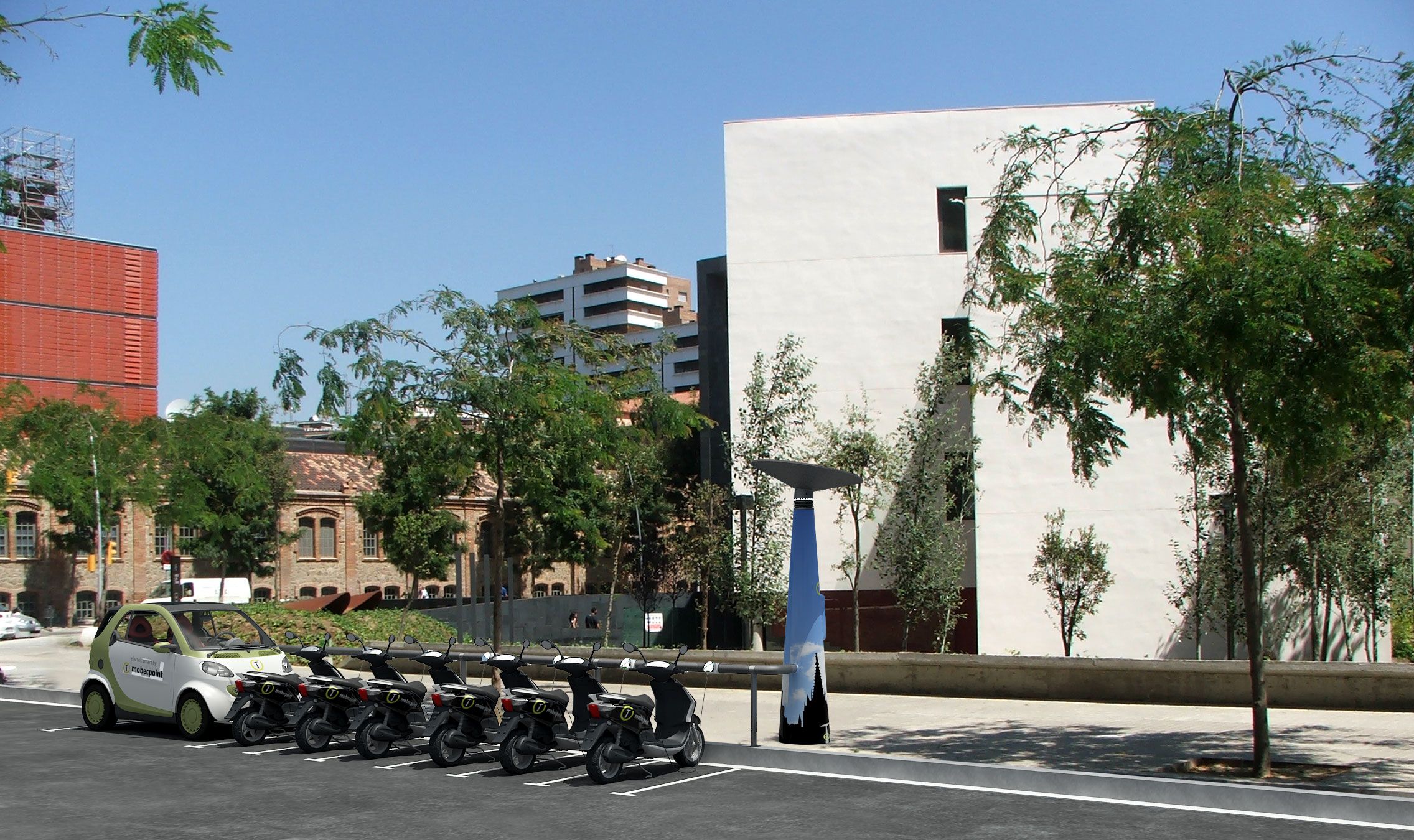
Urban Areas
Barcelona is located between rivers to the north and south, and between the Mediterranean Sea to the east and hills to the west. These hills provide panoramic views of the sea but also, much like Beirut, keep the water condensation from escaping. This creates more humidity and traps exhaust in a band of smog above the city. Rain is therefore always welcome, preferably at night, to help clean the streets and freshen the air. It rained while Revolve Magazine was at the IHT global Clean Energy Forum at the end of October – and Barcelona was beautiful!
Barcelona will be a self-sustainable, hyper-connected, zero emissions metropolis in 14 years
Antoni Vives, Deputy Mayor for Urban Habitat, City of Barcelona.
Barcelona has an incredible architectural legacy: from Gaudi and his Sagrada Familia (still under construction… but finally open to the public) to Carles Buïgas and his Magic Fountain built for Expo 1929 at the foot of Montjuic hill where tourists ascend the steps to the National Art Museum; to the geometric grid of the city streets with rounded corners and inner courtyards. Embedded within the fabric of Barcelona, this legacy must inspire today’s generation of architects who are breaking new ground with efficient building material and structures.
In the last decade, the Innovation District, called 22@Barcelona, transformed 200 hectares of run-down industrial land into a vibrant hub of architectural creativity. 22@Barcelona comprises different cluster areas for Media, Information and Communication Technologies (ICT), Medical Technologies (MedTech), Design and Energy. The ICT cluster includes numerous examples of ‘green architecture’ – the most innovative and original green buildings are Media-TIC and the AGBAR Tower.
Green Buildings
Media-TIC is considered an example of green architecture because it is actually a lime color – at nighttime the fluorescent reflection of the metal structure is caused by the bio-luminescent paint material from jelly-fish – and because this edifice was built very efficiently:
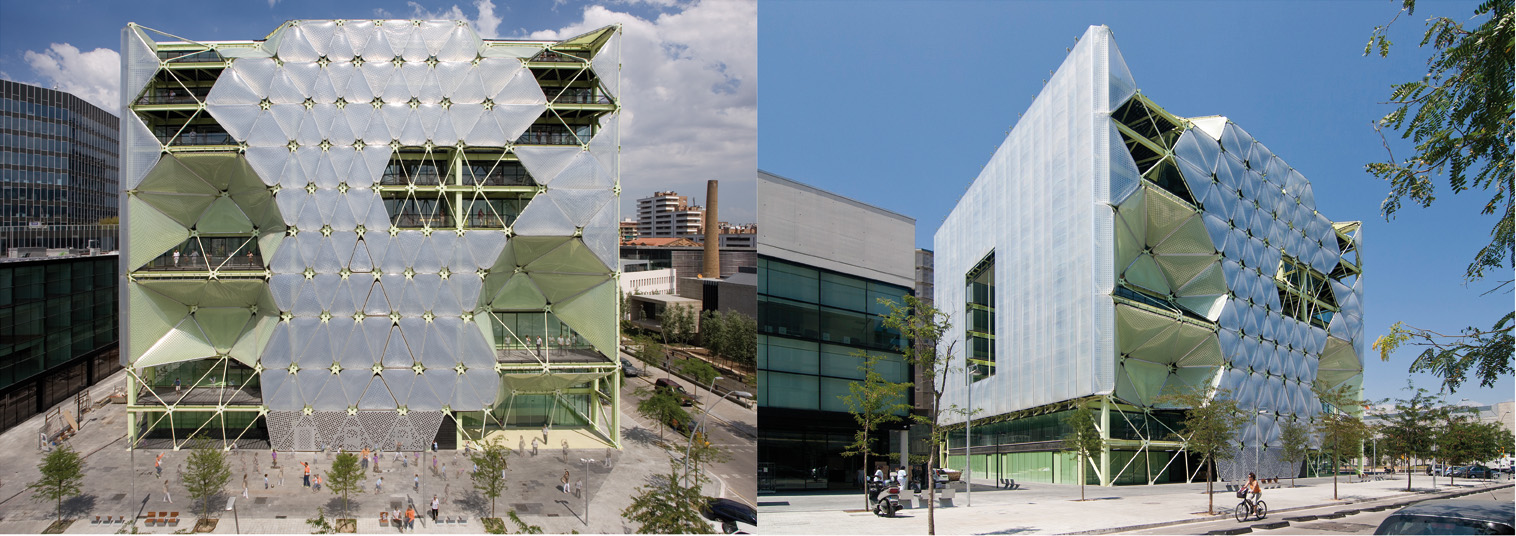
Media-TIC targets achieve:
- 20% CO2 reduction due to the use of district cooling clean energy.
- 10% CO2 reduction due to the photovoltaic roof.
- 55% CO2 reduction due to the dynamic ETFE sun filter.
- 10% CO2 reduction due to energy efficiency related to smart sensors.
Total: almost a net zero building with 95% CO2 reduction.
The building was conceived by the Cloud-9 architect’s office, led by Enric ruiz-Geli, who explained to Revolve that the structure supports “hanging floors”: the building has 4 main trusses from which the different floors hang by tensiles. Less material was used during construction which means that the building also weighs less.
This reduces expenses since 65% less cement was used. Then, besides the generic PV-rooftops, becoming increasingly common now, the Media-TIC building has this futuristic plastic coating of inflatable bubbles that regulate light and temperature.
These translucent plastic shields are made of ETFE (Ethylene Tetrafluor Ethylene) that was recently approved as a construction material and itself a Spanish innovation. The mechanism regulates temperature and reduces the use of air-conditioning and carbon emissions.
Our generation of architects will be recognized for bringing knowledge to society through more efficient buildings.
Enric Ruiz-Geli
ETFE is a Teflon-based polymer, very light but highly resistant. The 2 prototypes used are ETFE cushions – for the south façade – and ETFE fog – for the west façade – both of which help regulate the intensity of sunbeams heat inside the building.
In the Mediterranean region where air-conditioning comprises 80% of energy consumed, this building could be a prototype of how to combat climate change in cities. In the last 230 years, last summer was the hottest, according the Ruiz-Geli, and Media-TIC spent nothing on cooling.
In Taipei, Taiwan, a Media-TIC-style building has already been commissioned to replicate the energy efficient mechanisms and lighter structure. Building will begin in 2012 and the tower, rather than cube as in Barcelona, should be finished by 2014.
Forum Area and Solar Photovoltaic Plant
The architects José Antonio Martinez Lapena and Elias Torres Tur designed the Forum Esplanade which is the central plaza to the new suburban cultural center that is located on the coast next to what has been transformed into a combined cycle plant and the new Besos waste treatment plant. Waste water is treated here and recycled into the city system, used by the Innovation District in particular that is closest to this more marginal area of Barcelona.
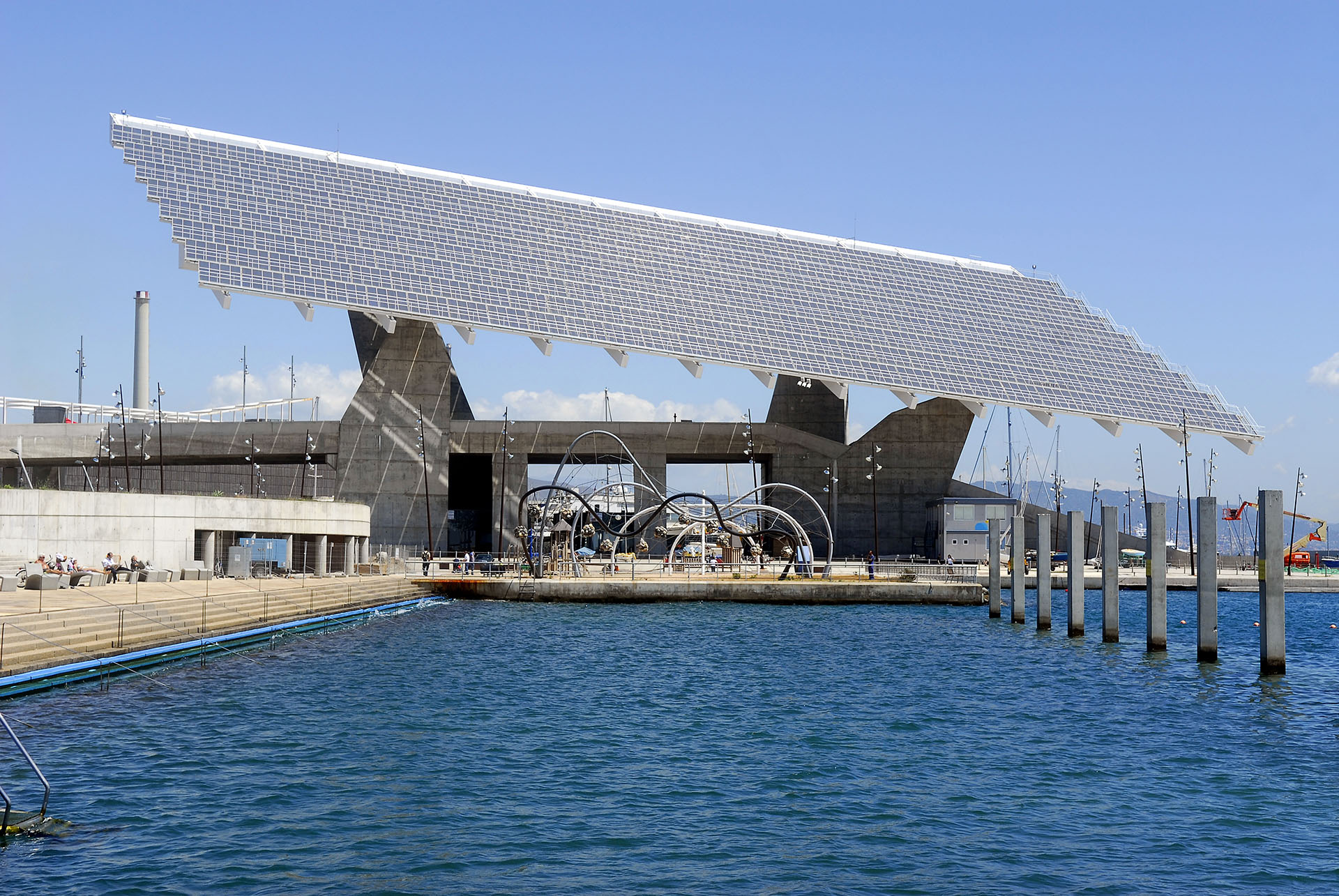
The transformation of this part of the city includes a massive 14 hectares with a Forum Building and a Convention Center (CCIB) that host indoor and open-air cultural activities, as well as a solar photovoltaic plant also inaugurated in 2004 with the Universal Forum of Cultures in Barcelona at the entrance of the new Marina. The 4.500 m2 pergola is mounted on four concrete pillars and provides both shade and energy, producing 1.100 kW peak.
AGBAR Tower is also fascinating due to its double skin. Designed by French architect Jean Nouvel and built in 2005, the tower is 142 meters high with 31 floors. The ‘double skin’ refers to the inner concrete wall with openings and coated with insulating material, and the outer steel frame and glass slats oriented to minimize solar heat on the façade that is illuminated by 4,200 LED luminous devices. The opening and closing of the glass shutters on the façade is regulated by temperature sensors on the outside of the AGBAR Tower which helps reduce energy consumption and air conditioning.
Peripheral Projects
Metropolitan Architecture Projects
Within the broader Metropolitan Area of Barcelona, one architectural firm – B01 Arquitectes – stood out for their modesty, innovation and environmental-awareness.

The renovated Theater of Sant Andreu de la Barca looks onto the new Garcia Lorca Square. The pergola covering the entrance from the square is composed of photovoltaic panels, signaling a commitment to sustainability. The theater has a capacity of 423 people for large showings and includes a café plus an open-air theater. This is bound to become a place to meet.
The common thread of our work is to advance sustainability while raising awareness through a vision on the environment.
Sander Laudy – Architect at B01
The Technological Center of Leitat is unique because the parking lot is on the roof which avoids unnecessary excavation in the mountain. In response to complaints of the hot Spanish sun baking employees’ cars during the day, swaying photovoltaic sails will be set up to pro- vide shade – the energy captured helps power the building that is surrounded by natural vegetation.
Just south of Barcelona, in the town of El Prat de Llobregat, B01 was asked what to do with the run-down maritime look-out (Semafor) and police barracks (Carrabiners). They opted to attract those in search of some tranquility. The beach is protected nesting territory for birds, but you can admire the sea and sand from an FSC Kumaru wood walkway that loops in and out of the empty building.
To learn more about their projects in Barcelona and beyond, visit: www.b01arquitectes.com
Catalonia Is Going for Offshore Wind
The southern Catalan province of Tarragona – in the Terres de l’Ebre – boasts one of the largest (and highest) wind farms in Spain. With a capacity to generate 66 Gigawatts (GW) of power and around €5.5 million per year for the region of Catalonia under regular wind conditions, the farm comprises 15 wind turbines built by the Spanish company Gamesa.
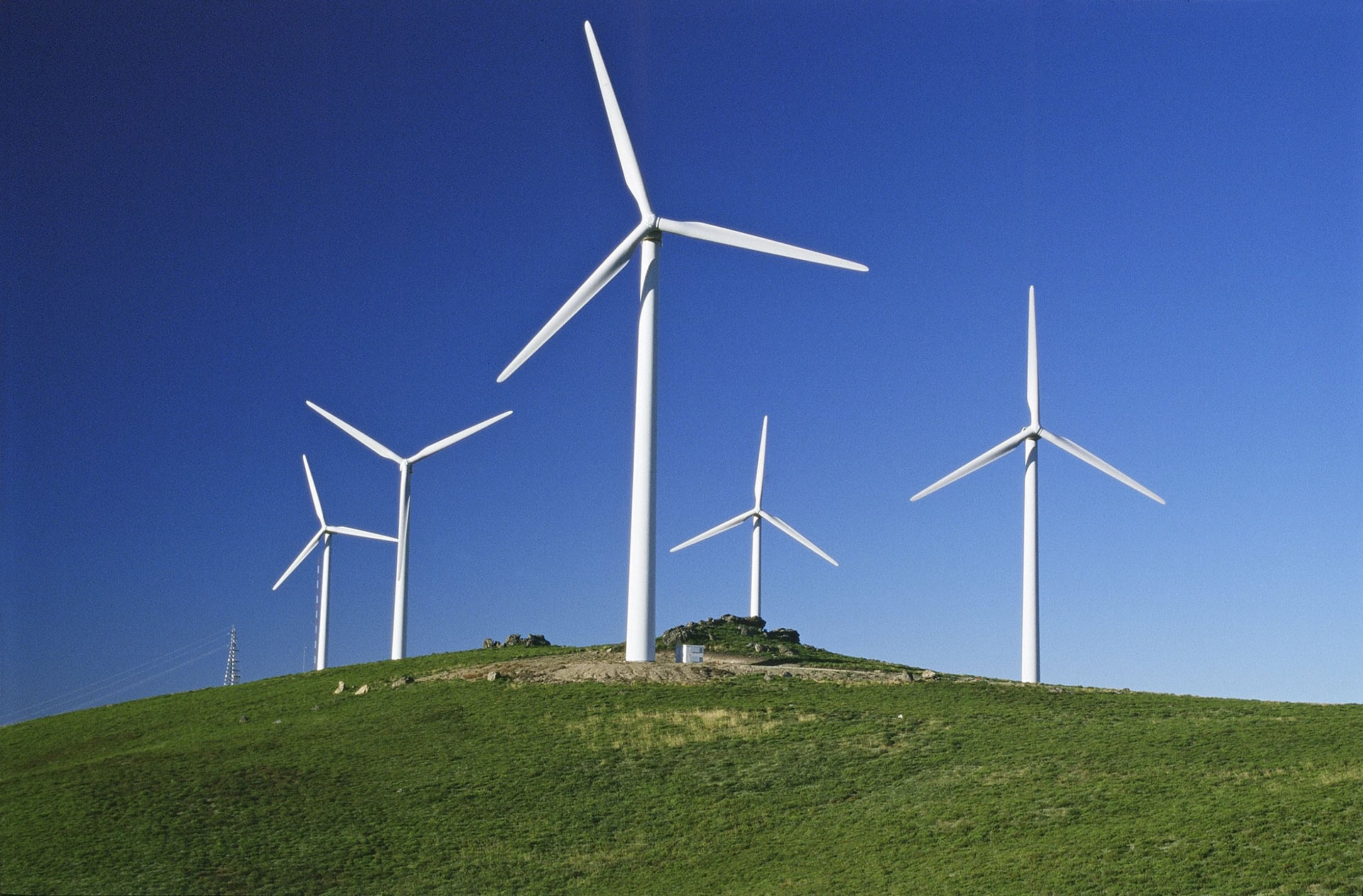
Now construction is planned for around 10 fixed and floating off-shore wind turbines some 18 kilometers off the coast of Tarragona. Project Zefir, consists of two phases:
| Phase I | Phase II | |
| Water depth | 35-40 m | ~ 100 m |
| Distance from coast | 3.5 km | ~20 km |
| Number of turbines | 2-4 | 6-8 |
| Power installed | 10-20 MW | 50 MW |
| Type of foundation | Bottom-fixed | Floating |
| Installation dates | 2012-2013 | 2014-2015 |
Offshore wind energy is more constant therefore wind turbines can be shorter with the same or greater return of power produced. However, offshore farms are more expensive to install and energy needs to be brought back to land via cables set in the sea bed to avoid fishing drags.
Around the World
Acciona’s 100% eco-friendly boat sets off from Barcelona in 2012 to participate in the renowned Vendée Globe. The skipper chosen for Acciona’s boat, Javier Sansó, will go solo for 43.000 kilometers around the world during an estimated three months. The boat relies entirely on water, wind and sun to power its trajectory – no gasoline, no pollution; only the elements of Nature – just as it was before, except that now, everything is faster and more teched-up.
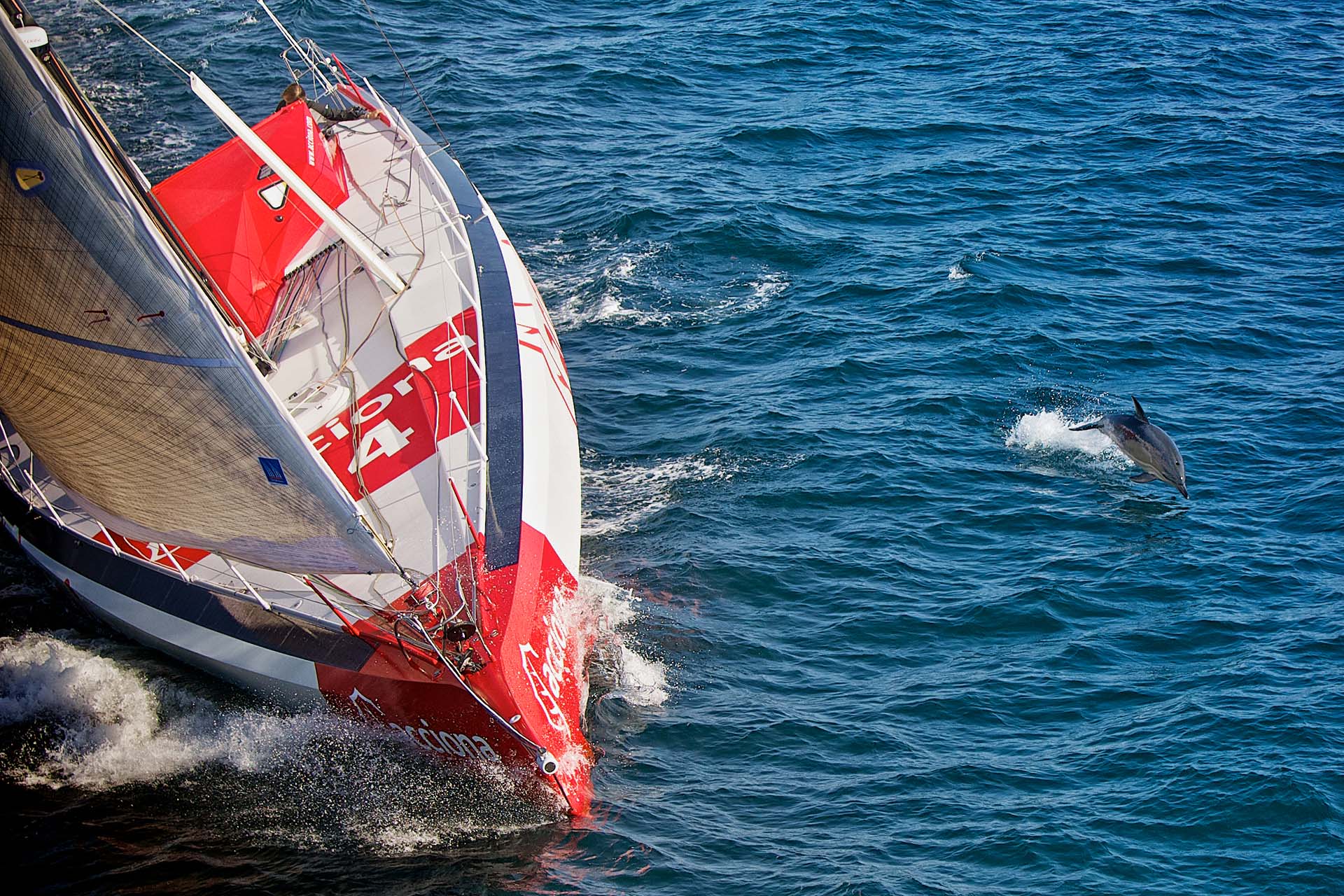
Equipped with solar panels to capture energy from the sun, as well as hydro-propellers that capture energy from the water, the batteries required for the electric motor and for telecom material (GPS, radio, computer) will be constantly charged – plus two little wind turbines in the stern of the boat. Acciona’s boat was christened at the Marina of Barcelona during the 2011 Global Clean Energy Forum organized by the International Herald Tribune.
RespiraAspira is a campaign launched in March 2011 to introduce more efficient mobility to make Spanish cities more sustainable. The campaign targets reducing urban traffic by making more streets only available to pedestrians as well as implementing stricter speed limits to protect children and elders. RespiraAspira essentially encourages a general move towards a less congested and more pleasant urban habitat for citizens to enjoy better air quality and cleaner mobility.
Respira Aspira brings together diverse groups in society interested in improving the quality of life in
cities, which included the scientific and medical community, business and civil groups involved in
promoting air quality, road safety, green mobility, welfare for children, elderly, disabled and citizens at
large. Recently the group published 100 Good Reasons, for reducing urban traffic and its negative
impacts and they are now planning to link with other groups to start a European wide campaign.
Learn more here and join the conspiracy: www.respiraaspira.org